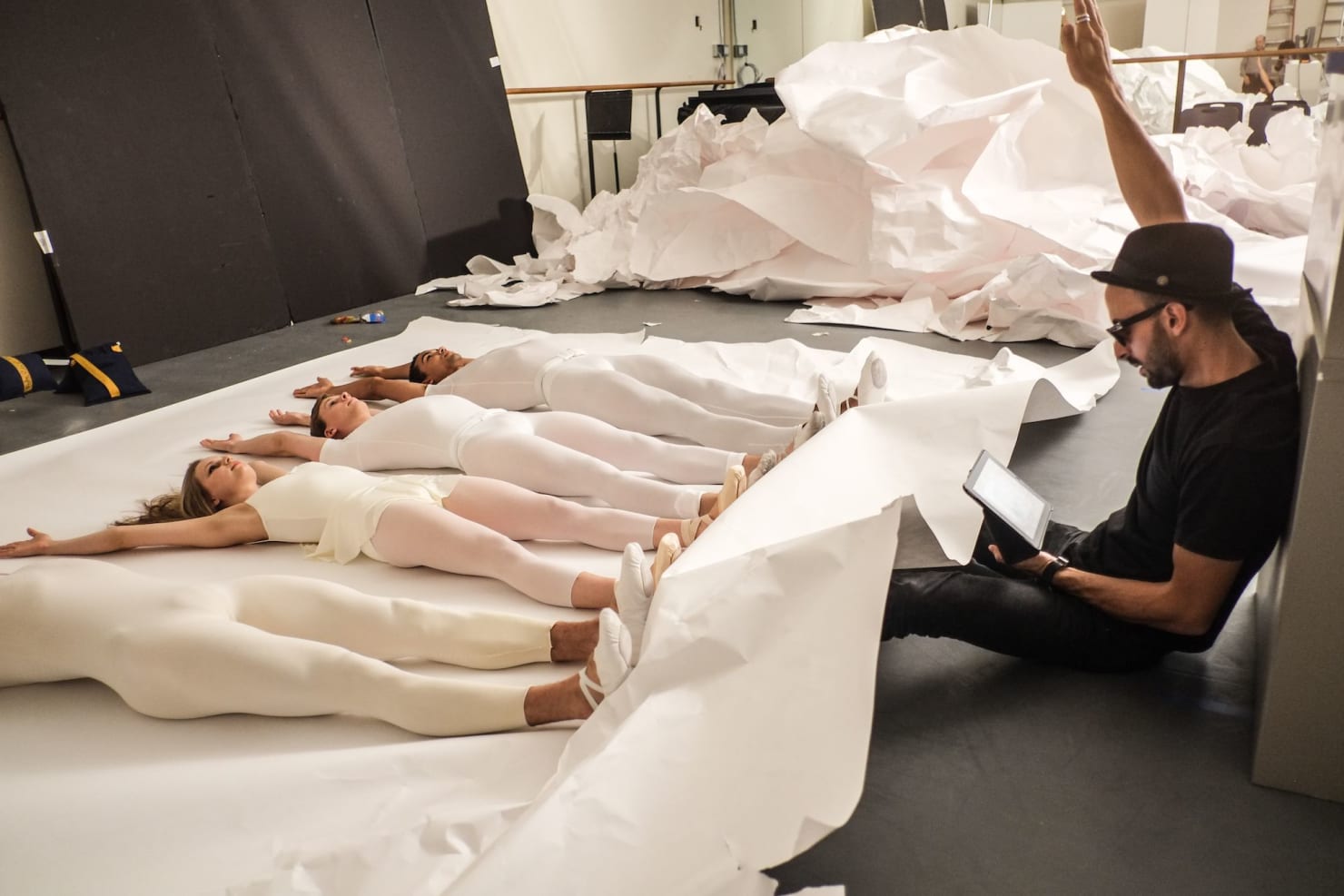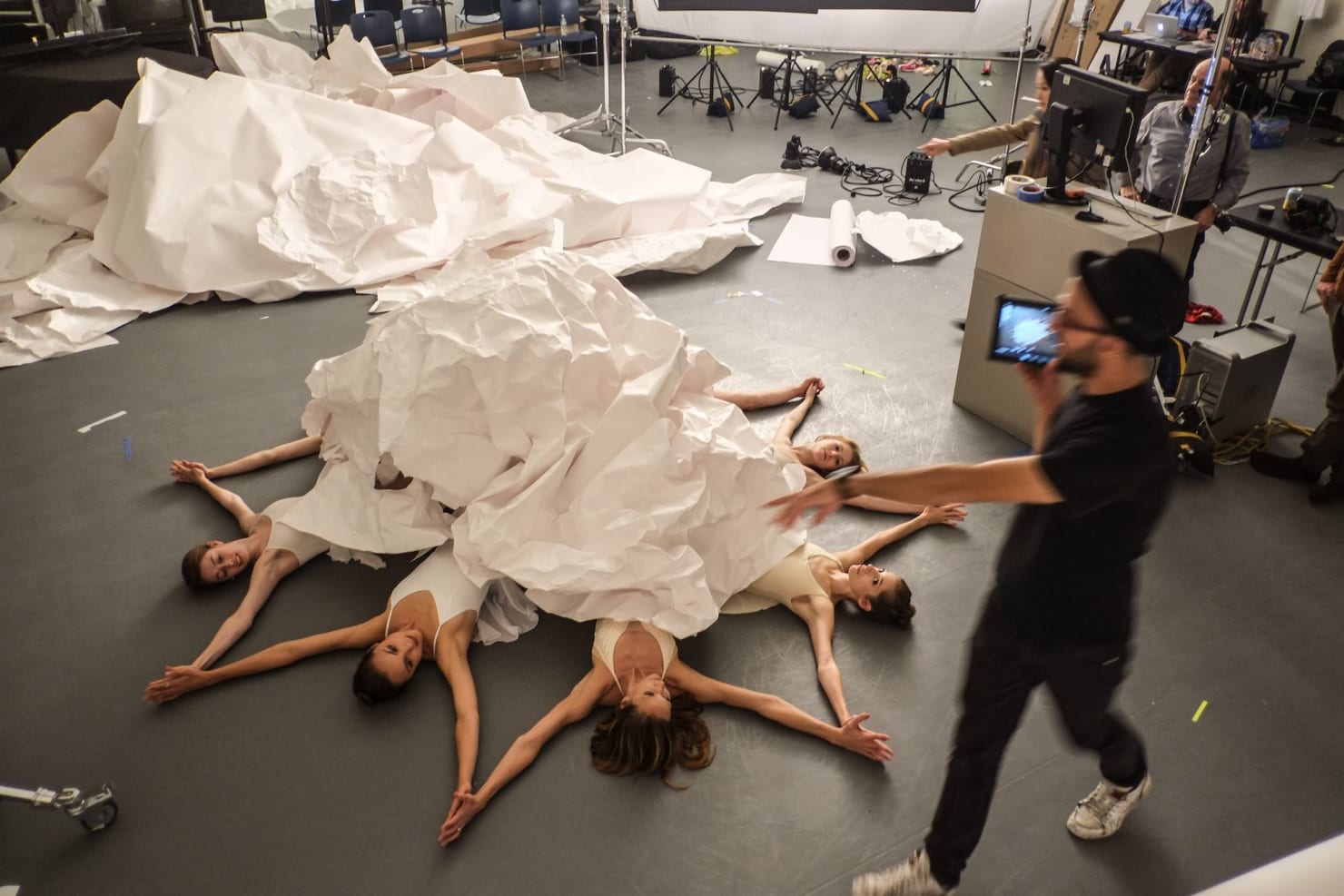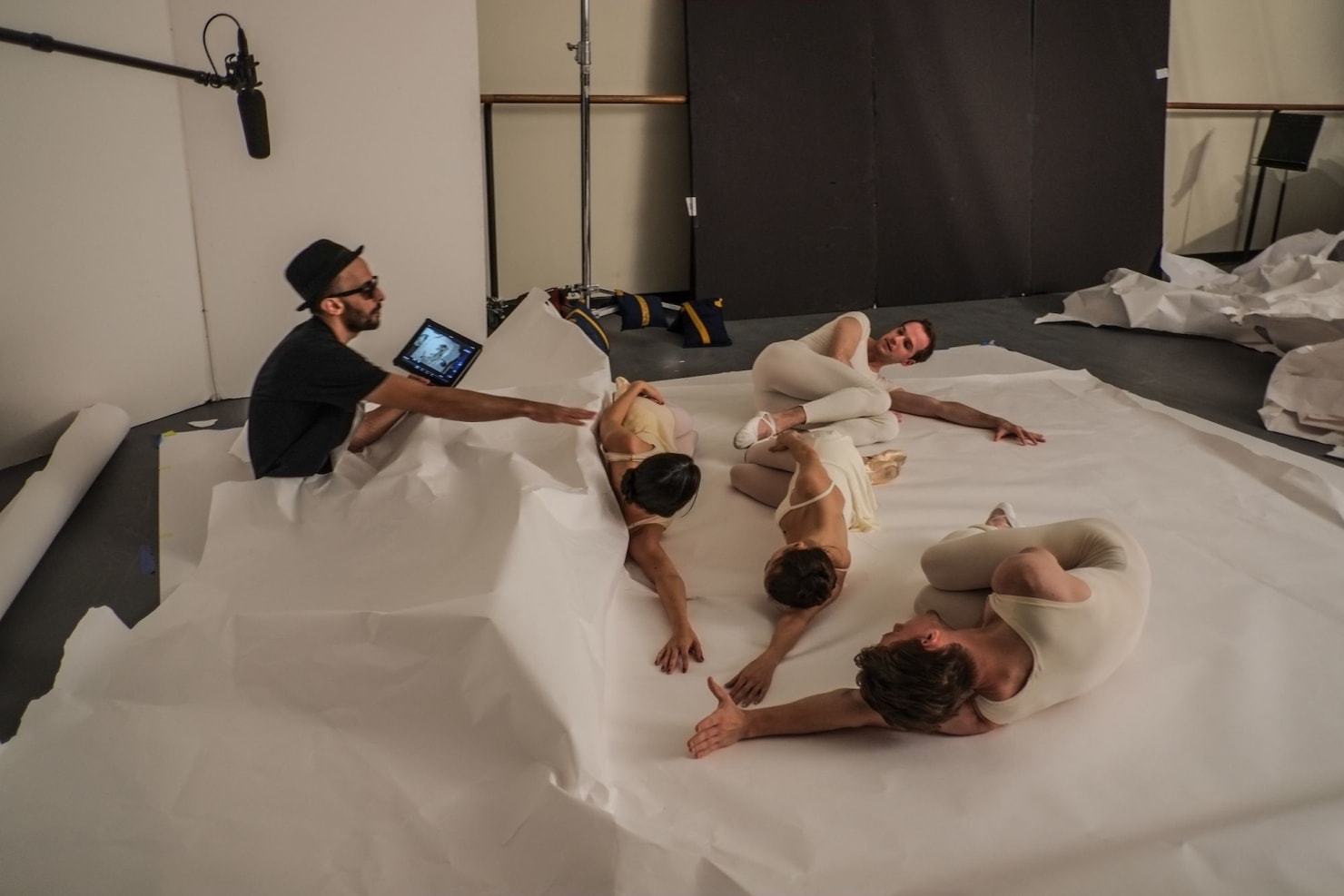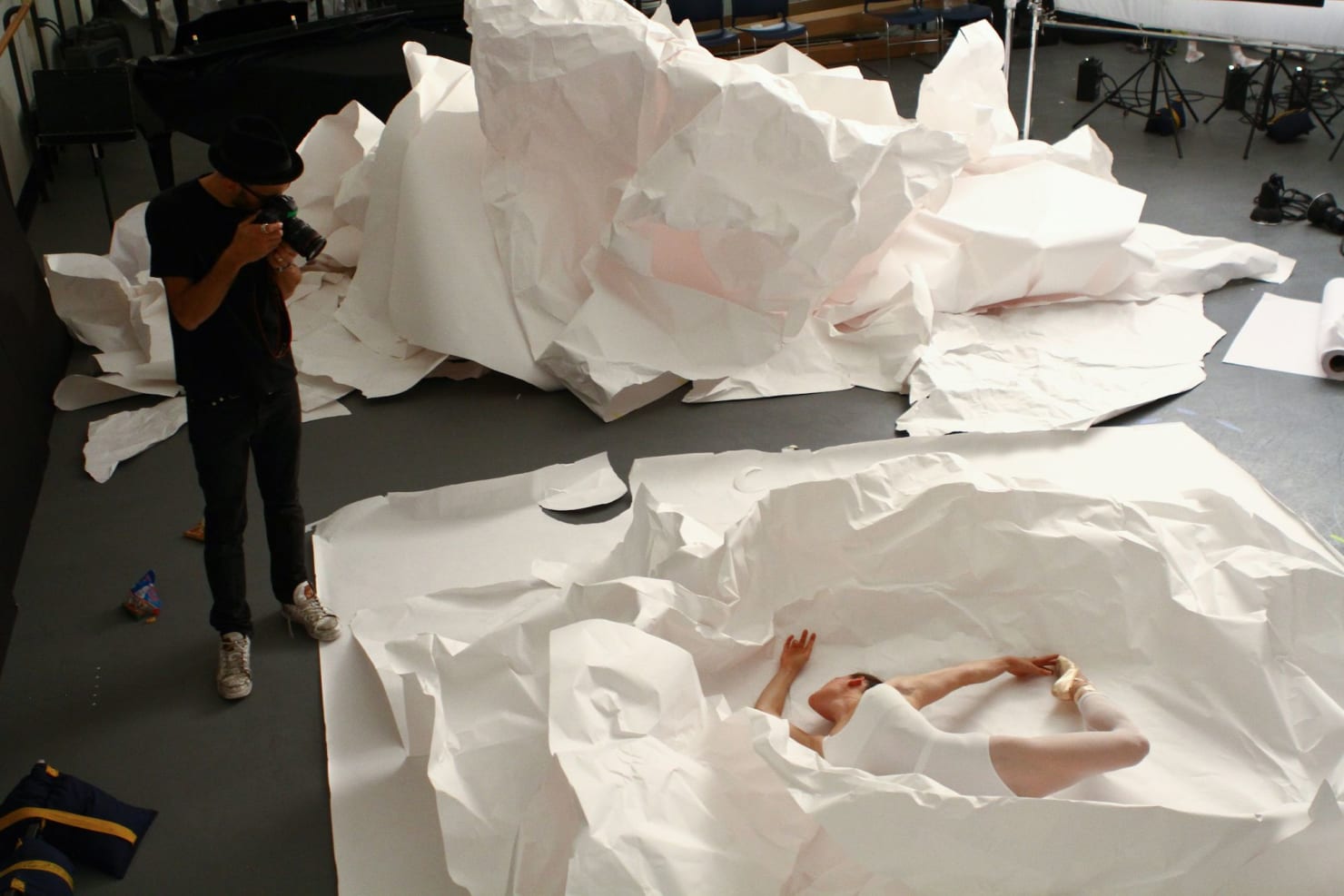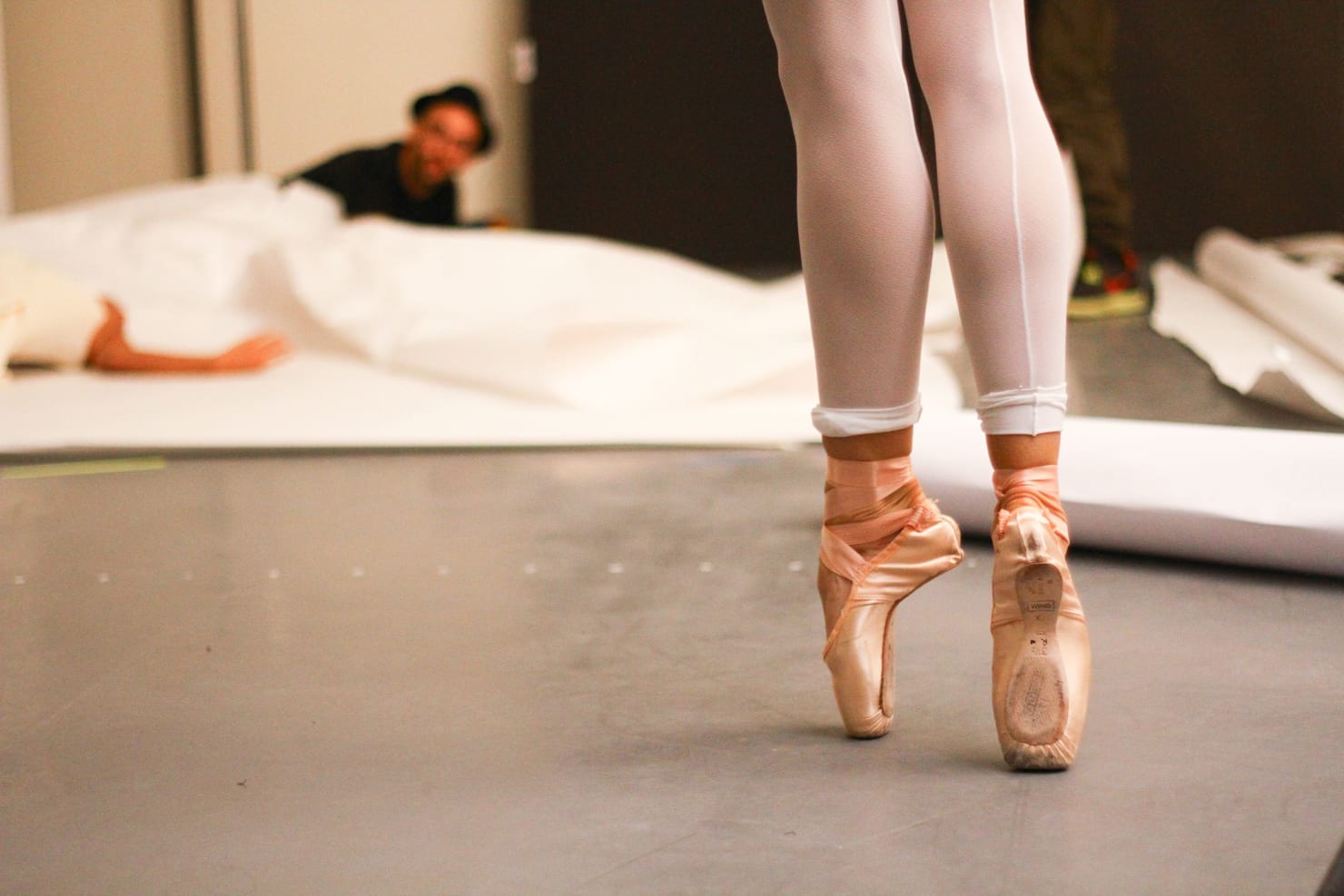
In the Eye of the Beholder
Art Series Returns with JR at the Helm
, January 14, 2014
This winter the New York City Ballet Art Series is back for a second year with an arresting photographic installation in the David H. Koch Theater by JR.
As a “photograffeur,” JR has pasted his grand-scale portraits of local people on walls humble and grand. Winning the 2011 TED prize inspired him to devise Inside Out, an international project that enables people to have their picture taken and pasted publicly to support an idea, project, or action (it has engaged more than 180,000 people in 8,600 locations worldwide). He spoke on the phone from Paris with Terry Trucco about his affinity for photography, the evolution of his art, and what it was like to work with dancers.
You’ve worked with photography ever since you found a camera on the Paris Metro as a teenager. Why photography?
Photography speaks to everyone. Because my work is about interactions between people, I wouldn’t choose a form of media that only speaks to a few. It’s interactive. It draws in a 7-year-old person or a 90-year-old person. And the power of image keeps drawing me.
You started as a 15-year-old graffitist, scrawling your name on Paris rooftops.
It was about discovering the city from another angle. Also, it was the art of existence, writing your name so you would be remembered, to show that you existed.
When did you realize you were an artist?
When I started doing photographs, I realized I was a photographer. But then I realized maybe I was not really a photographer because I was pasting the portraits I took on walls. Photographing was just part of the process. So I guess it was maybe when I was 21 or 22, and it was through the eyes of the people I became an artist, not because I decided to call myself an artist.
That was in the aftermath of the 2004 Paris riots when Portrait of a Generation, close-ups of young residents of the balieues you pasted throughout the city’s toniest neighborhoods, caught international attention. But your work is about the process, not just the pictures or the final result.
I always knew there were different steps in creating a work. For example, I did an installation called Face 2 Face where I did portraits of Palestinians and Jews of the same profession and pasted them next to each other in Israeli and Palestinian cities. I knew when I was doing the portraits that the pictures were not the artwork. They were just the first step. It doesn’t matter if the photo is the most amazing photo or not. It’s where you put it, how you put it, who helped you, how people react to it.
You use your work to learn about the world, to explore areas you don’t know.
When I told people I was going to work with New York City Ballet, they were shocked at first, because they knew that I had never seen a ballet. But then it made sense — they knew I’d be working with something that I don’t know. It’s like going to the other side of the planet. You go with a certain distance and naiveness because you want to learn. You want them to explain their world, their context, their vision and learn about how they see their world or their work or their art.
You used the floor of the Promenade the way you might use an urban wall in one of your outdoor installations.
If you’re on the ground floor you don’t see the artwork, you walk on it. You’re part of it. But if you go up, you see the floor in a different way. I wanted the audience to feel that they have to move if they want to see the artwork.
The photographs form the image of an enormous eye when you look down from the upper rings. How did you choreograph the photo shoot to get what you needed to create it?
I used paper to help create the image. The dancers are pushing the paper, making movements — not necessarily ballet movements — to make this eye appear.
Did you pose the dancers in each shot?
I directed some of the shots because I needed to position the dancers to create the image of the eye. But for other poses I just wanted them to be creative. They’re so professional they would give me poses I had never seen, poses I would never even dream of.
Did you have everything mapped out in your mind when you arrived at the shoot?
I had the main idea in my head. But I like to create when I’m on the site. In that rush, that 20 minutes or hour that I had with them, is when I come up with the best idea. I need to be under pressure. I don’t stress myself the day before, but I stress myself at the exact minute that I’m supposed to shoot. That’s when the best comes out for me.
How was working with dancers different from photographing people on the street?
I always work in a collaborative way. I don’t like to tell the people I’m photographing what to do. They give me so much more than I would get otherwise. But with the dancers I didn’t need to reshoot anything because they know exactly how they look and how to behave in front of the camera. And that let me be so much more creative.



